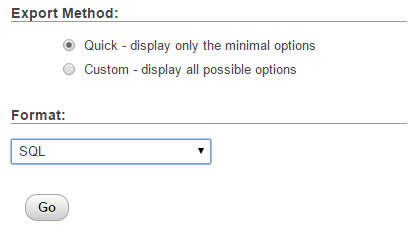Creating a manual WordPress database backup is a crucial task to ensure the security and integrity of your website’s data. You can do this using various methods, but here’s a step-by-step guide on how to make a WordPress database backup manually using phpMyAdmin, a commonly available tool in web hosting control panels like cPanel.
There are many plugins available to make WordPress backup automatically. Cpanel also provides a facility to take backup of the database automatically. In this tutorial, you learn how to take WordPress Database Backup Manually without to take help of any plugin.
How To Make a WordPress Database Backup Manually
Step 1: Access phpMyAdmin
- Log in to your web hosting control panel, such as cPanel.
- Look for the “phpMyAdmin” icon or link under the “Databases” section, and click on it. This tool allows you to manage your MySQL databases.

Step 2: Select Your WordPress Database
- In phpMyAdmin, you’ll see a list of databases on the left-hand side. Click on the database associated with your WordPress website. If you’re not sure which one it is, you can find the database name in your WordPress configuration file (wp-config.php).
Step 3: Export the Database
- After selecting your WordPress database, click the “Export” tab in the top menu.
- You’ll be presented with export options. Here’s what you need to do:
- Choose the export method: “Quick” or “Custom.” “Custom” allows for more advanced options, but for a simple backup, “Quick” is sufficient.
- Select the format: Choose “SQL.”
- Compression (optional): You can choose to compress the export file to save space. “None” is a suitable option.
- Click the “Go” or “Export” button to initiate the export process.

3. Now choose the Format (preferred SQL) and click the ‘Go’ button.

Step 4: Download the Backup File
- phpMyAdmin will generate a SQL file containing your WordPress database. Once the export process is complete, it will prompt you to download the file.
- Click the link to download the backup file to your computer.
Step 5: Store the Backup Safely
- It’s crucial to keep your backup file in a secure location. You can store it on your local computer, an external hard drive, or a cloud storage service like Google Drive or Dropbox.
- Be sure to give the backup file a descriptive name and include the date to easily identify it later.
Congratulations! You’ve successfully created a manual backup of your WordPress database using phpMyAdmin. This backup contains all your website’s content, settings, and user data, which can be crucial for disaster recovery or when you need to migrate your site to a different server. Remember to regularly perform database backups and keep multiple copies in different locations to ensure the safety of your website’s data.
